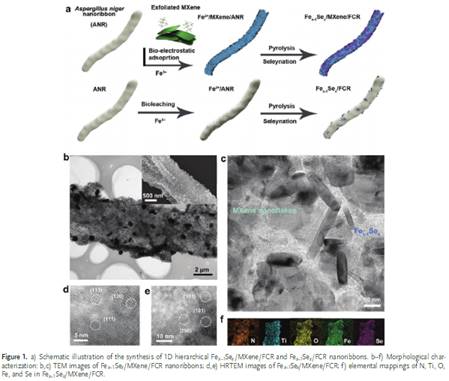Junming Cao, Lili Wang,* Dongdong Li, Zeyu Yuan, Hao Xu, Junzhi Li, Ruoyu Chen, Valerii Shulga, Guozhen Shen,* and Wei Han
J. Cao, D. Li, Z. Yuan, H. Xu, R. Chen, Prof. V. Shulga, Prof. W. Han Sino-Russian International Joint Laboratory for Clean Energy and Energy Conversion Technology College of Physics International Center of Future Science Jilin University Changchun 130012, P. R. China E-mail: whan@jlu.edu.cn
Prof. L. L. Wang, Prof. G. Z. Shen State Key Laboratory for Superlattices and Microstructures Institute of Semiconductors Chinese Academy of Sciences Beijing 100083, P. R. China E-mail: liliwang@semi.ac.cn; gzshen@semi.ac.cn
Dr. J. Li Key Laboratory of Advanced Energy Materials Chemistry (Ministry of Education) College of Chemistry Nankai University Tianjin 300071, P. R. China
Owing to their cost-effectiveness and high energy density, sodium-ion batteries (SIBs) and potassium-ion batteries (PIBs) are becoming the leading candidates for the next-generation energy-storage devices replacing lithium-ion batteries. In this work, a novel Fex−1Sex heterostructure is prepared on fungus-derived carbon matrix encapsulated by 2D Ti3C2Tx MXene highly conductive layers, which exhibits high specific sodium ion (Na+) and potassium ion (K+) storage capacities of 610.9 and 449.3 mAh g−1 at a current density of 0.1 A g−1, respectively, and excellent capacity retention at high charge–discharge rates. MXene acts as conductive layers to prevent the restacking and aggregation of Fex−1Sex sheets on fungus-derived carbonaceous nanoribbons, while the natural fungus functions as natural nitrogen/carbon source to provide bionic nanofiber network structural skeleton, providing additional accessible pathways for the high-rate ion transport and satisfying surface-driven contribution ratios at high sweep rates for both Na/K ions storages. In addition, in situ synchrotron diffraction and ex situ X-ray photoelectron spectroscopy measurements are performed to reveal the mechanisms of storage and de-/alloying conversion process of Na+ in the Fex−1Sex/MXene/carbonaceous nanoribbon heterostructure. As a result, the assembled Na/K full cells containing MXene-supported Fex−1Sex@carbonaceous anodes possess stable large-ion storage capabilities.



Related link:https://doi.org/10.1002/adma.202101535